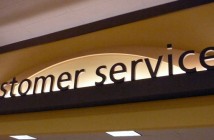Have you ever asked yourself a question like this: “If there is already a Starbucks in the Safeway store on Century Drive, do they really need another one in the parking lot?” Starbucks uses an expansion strategy that leads to an inevitable “yes” to that question. The answer is in matching a different reality with different target markets. This kind of strategy can work only when you know who your customers are and how they behave. Starbucks has eight different targeted customer groups:
- The office/commuter market
- The university/student activities market
- Neighborhoods and families
- Ordinary grocery shoppers
- Consumers shopping while running errands or doing chores
- Travelers at highway rest stops
- Consumers seeking entertainment
- Workers on break who are looking for a “grab and go.”
These are all retail occasions where the location as well as the design of the store must work to satisfy a specific type of targeted customer. This careful targeting is not just about the product. The focus is also on creating the “Starbuck’s Experience.” Locations are in community gathering places. Starbucks looks for a tenant mix that is compatible and dynamic in helping create that synergy that drives sales volume. They research to find whether the main customer for that specific location is a pedestrian or a driver, and then they design around that customer. In terms of externals, this experience starts with a sense of place that often includes outdoor seating, walkways and landscaping, and building features that are especially pedestrian friendly. An example of this includes an awning that gives a human scale to a larger façade.
Starbucks’ urban storefronts work with-and stand out from-those around them. Where necessary, the company changes the sign structure to extend beyond the wall line so that those walking down the sidewalk see the sign long before they get there. This is critical because the signage helps create the brand while allowing customers to connect from a distance. All the would-be customer has to see are the first two letters of the Starbucks’ name, and the font and color tell what is ahead. Most Starbucks locations have a storefront presentation with glass walls designed to draw the customer in. Not only can the approaching customer see the activity inside, but the inside customer can also connect with the outdoors. This helps create a “be seen” atmosphere as well as a most effective use of natural light.
Customers may be involved in relaxed conversations, be involved a business meeting or simply be reading a book. The high ceilings help create a comfortable space as well. They allow for better merchandising of product as well as signage for shopping ease such as menu boards. And all of this adds to merchandising efforts for all the products, not just the coffee. How can you apply the Starbucks approach to your own business? Ask yourself “How many different types of customers do I have?” Be sure to follow up each of those customer profiles with “How well does my store create the experience that makes customers not only want to stay but to come back again and again?” “How inviting is the store front, and how easy is it to shop your displays?” Of course, you must also be careful to prevent customer experiences that negate the many pluses of your inviting atmosphere. On a recent shopping trip I decided not to purchase a clothing item because I couldn’t determine the price. (….But that’s a story for another article!)
Jim Kress has over 15 years of sales and marketing experience and works at COCC where he helps small business improve their performance. He can be reached at 383-7712.




